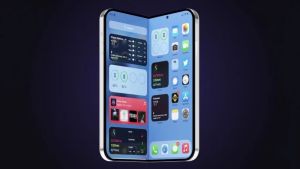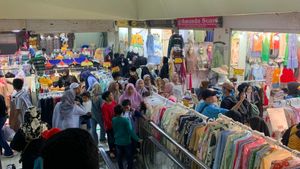JAKARTA - A team of scientists at Stanford University has developed synthetic skin made of silicon and polypropylene glycol that can stretch like human skin without tearing, while its magnetic properties allow this skin to align itself.
When heated, the two polymers soften and flow, then harden as they cool.
When heated at 158 degrees Fahrenheit, self-alignment and skin healing occur in about 24 hours.
The team says that these skins can lead to "soft ones that can be reorganized that can change shape and detect their deformations according to demand," which in turn can change war technology.
"We managed to achieve what we believe is the first demonstration of a multi-film layer sensor that automatically aligns itself during the healing process. This is an important step in imitating human skin, which has several layers that all reunite correctly during the healing process," said Co-autor Chris Cooper, a PhD candidate, quoted by the Daily Mail.
The team praises the skin as the most similar to the e-futuristic skin worn by the character
Cooper and his colleagues used the same layer technique as human skin to develop their innovations. "One layer can feel pressure, another layer of temperature, and the other is strain," added Co-autor Dr. Sam Root.
These layers can be designed to detect thermal, mechanical, or electrical changes.
The basic structure of each layer is formed from a chain of long molecules connected by a dynamical hydrogen bond - similar to the bonds that connect double-scattered DNA strands. This allows a recurrent refurbishment without tearing - similar to latex.
The researchers used silicon and PPG (polypropylene glycol). Both have mechanical and rubber properties as well as biocompatibility.
Both materials are carefully designed to have a similar viscosity and elasticity response to external pressures in the right temperature range.
"It took me a long time to heal. I cut my finger a few days ago, and it's still in the healing process after four or five days," said Cooper.
"For us, the most important part is that the skin heals itself to restore its function without interference or business from us," he said.
The addition of magnetic material also allows this prototype to assemble itself from separate pieces.
"By combining magnetic field-guided navigation and induction heating, we may be able to build soft, reorganizable robots that can change shape and detect their deformation as requested," said Co-autor Prof. Renee Zhao.
This long-term vision of the skin is to create a device that can recover from extreme damage. For example, imagine a device that when split into multiple parts and separate, can build itself independently.
A short video is shown showing several pieces of synthetic skin stratified submerged in water. Magnetically pulled together, the pieces approach each other, finally rearrange.
Their electrical conductivity returned as they recovered, and the LED installed on top of the material turned on as evidence.
The next step is to make these layers as thin as possible and with various functions. Prototypes are currently designed to detect pressure. Additional layers set to detect temperature or strain changes can be included.
In terms of the vision of the future, this team envisions robots that can be swallowed in small forms and then assemble themselves in the body to perform non-invasive medical treatment.
Other applications include electronic skin that can heal itself and function as a multi-sensor that fits the robot and gives them a sense of touch.
However, along with the potential for innovation and technological advances, it is also necessary to pay attention to the potential consequences that may arise. Questions about ethics and the use of this technology in an unsafe context must be seriously considered in order to prevent abuse and potential risks for humans.
Researchers at Stanford University remain committed to continuing their research in developing more advanced artificial skin and potentially providing significant benefits in various fields, taking into account ethical and safety implications as well.
The English, Chinese, Japanese, Arabic, and French versions are automatically generated by the AI. So there may still be inaccuracies in translating, please always see Indonesian as our main language. (system supported by DigitalSiber.id)













